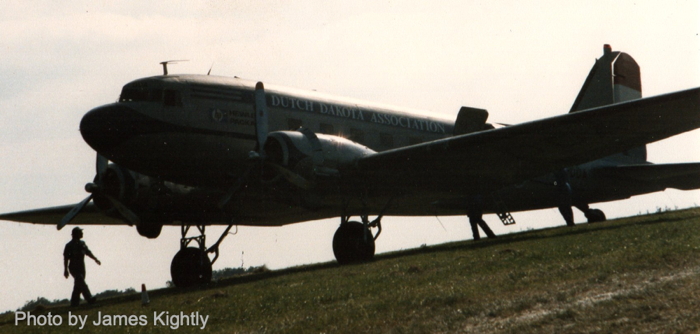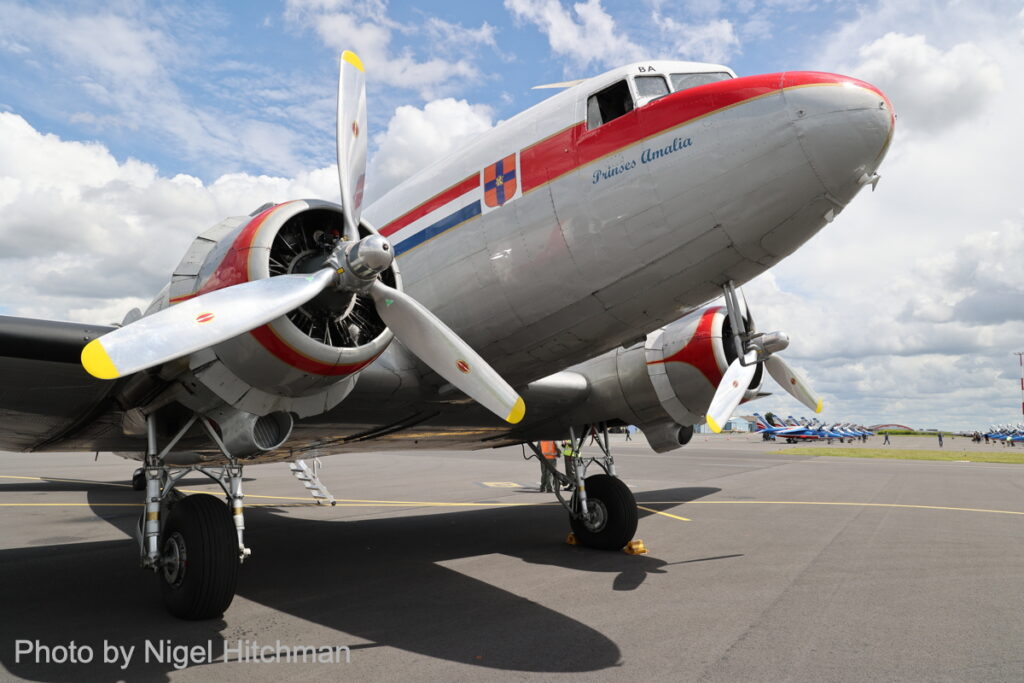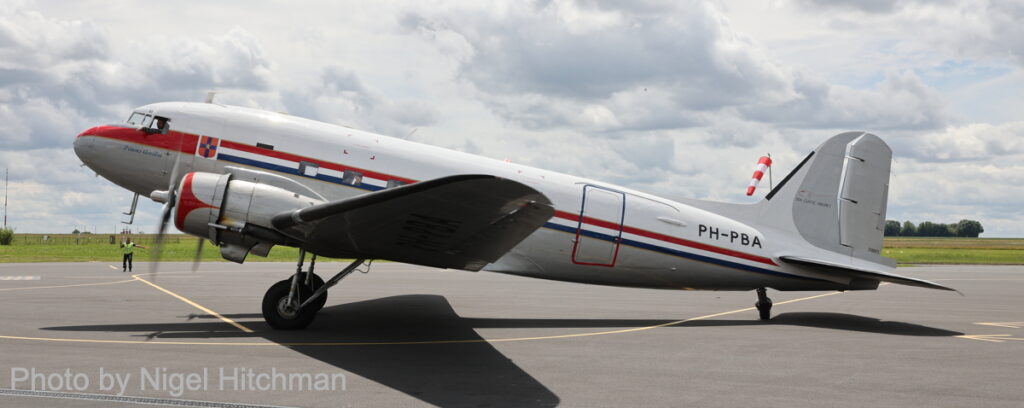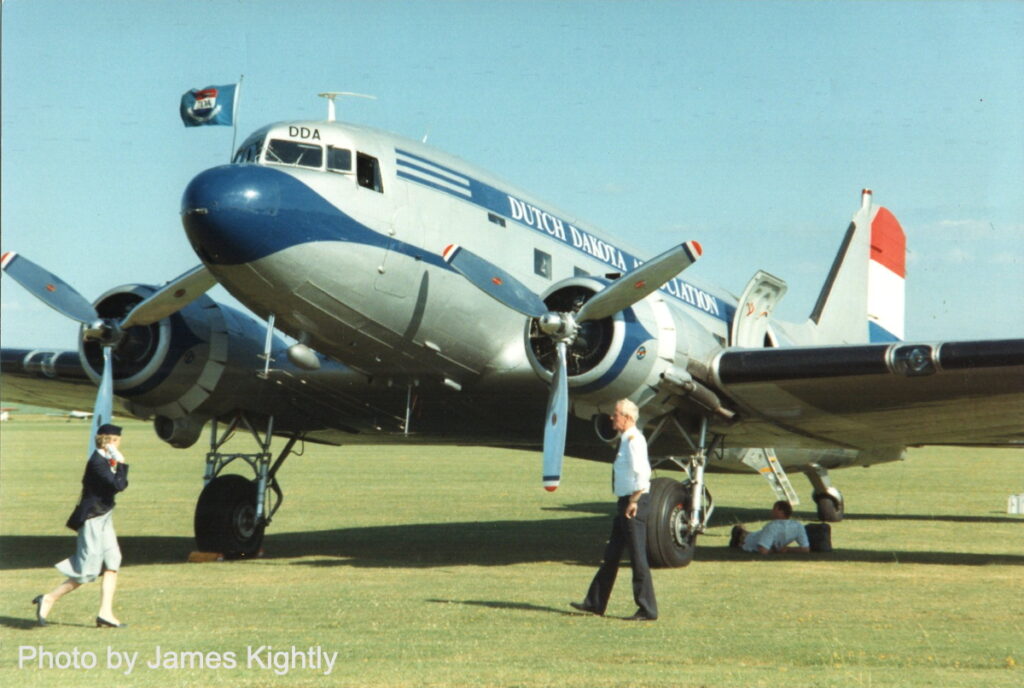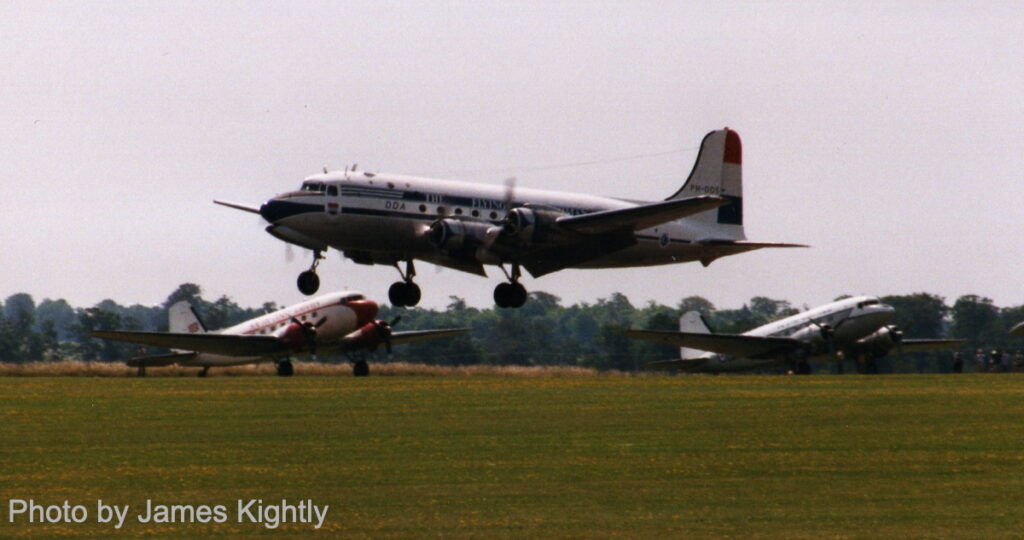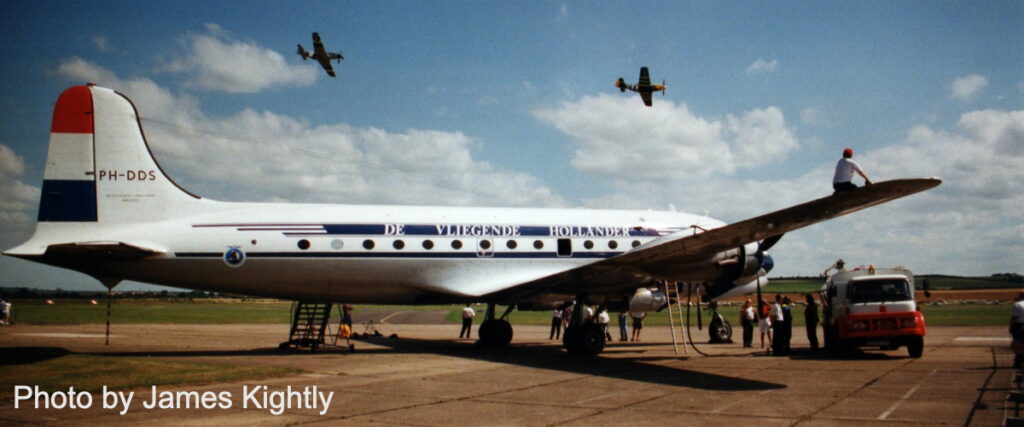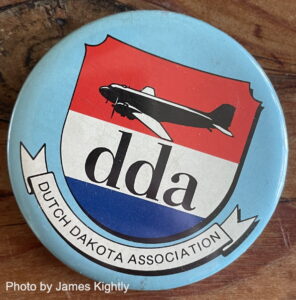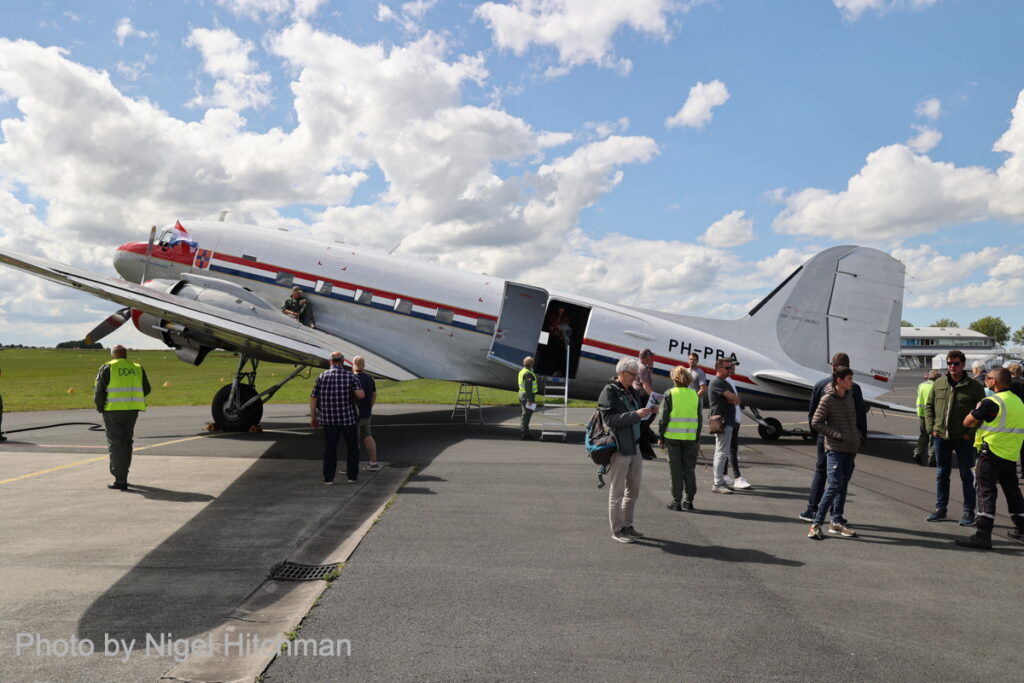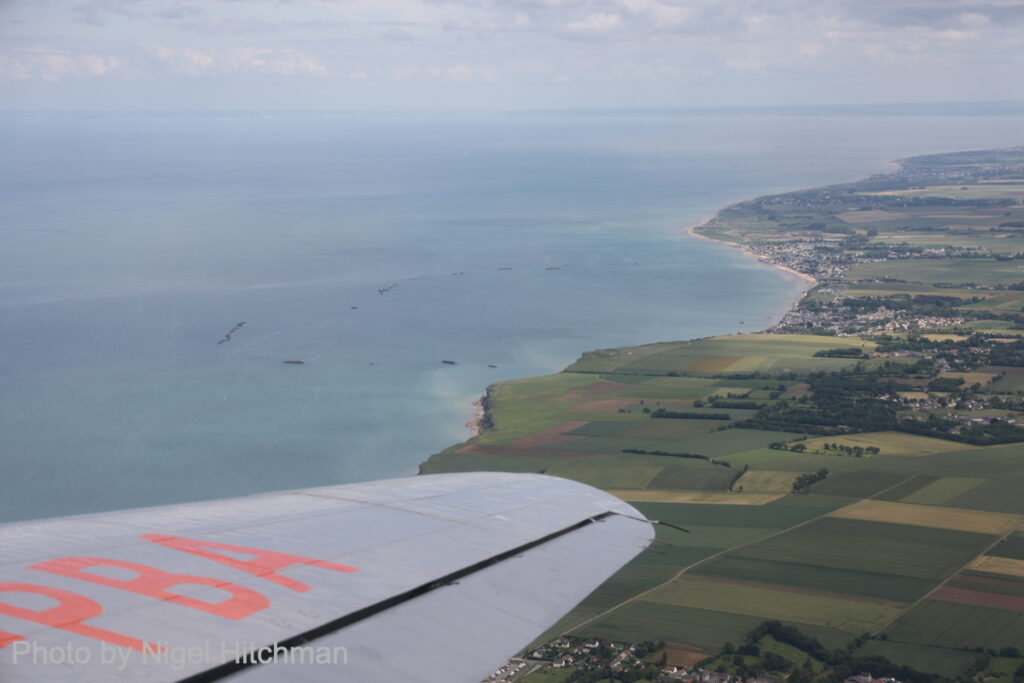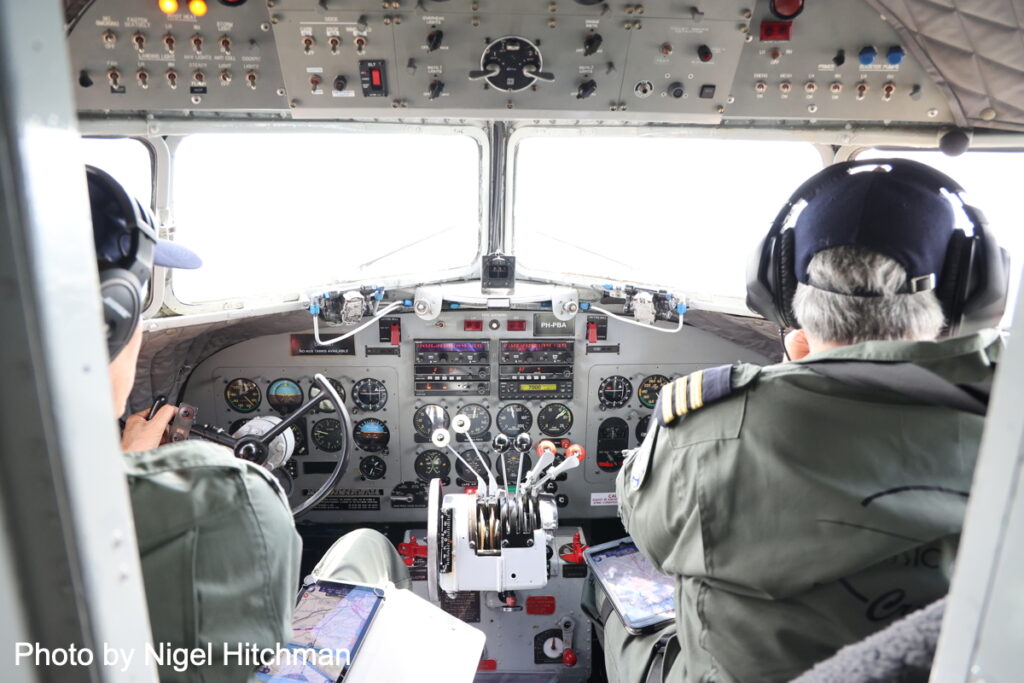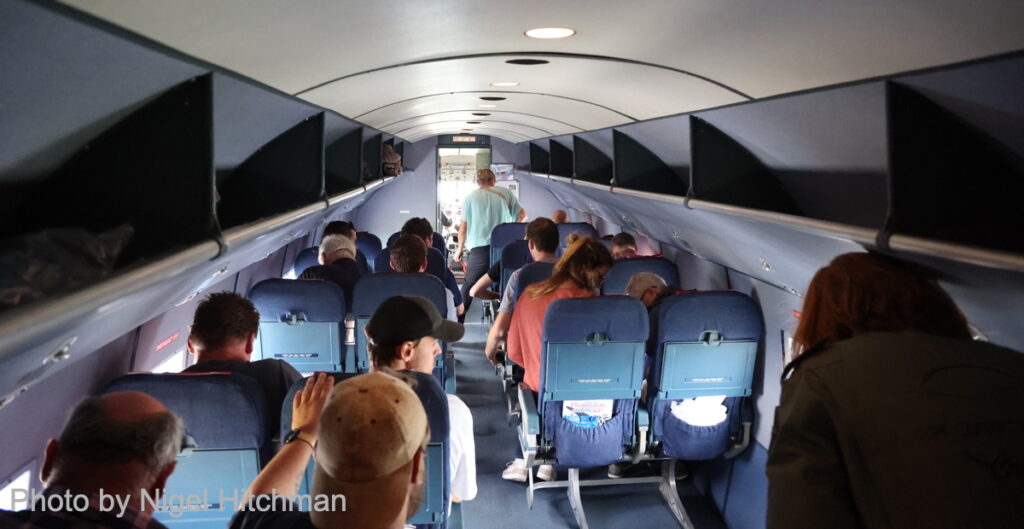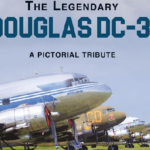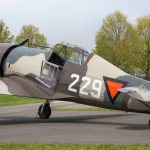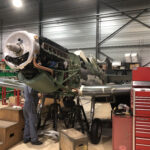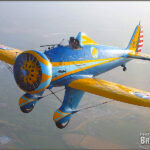By James Kightly, Commissioning Editor
One of the world’s longest-serving vintage aircraft rides organizations is finishing up its passenger flying operation at the end of 2024. Founded back in 1982, as the Dutch Dakota Association, now DDA Classic Airlines, they have been operating passenger pleasure flights from their native Holland through several parts of Europe for decades.
Their current aircraft is a Douglas DC-3C registered PH-PBA and named ‘Prinses Amalia’. The board of the volunteer organization has revealed that (albeit it with enormous regret) 1 October 2024 will mark the end of their pleasure flying activities.
Chairman Feije Jaski told Vintage Aviation News that there is not one single factor causing them to shut down operations, but an increasing accumulation of restrictions making successful, break-even activities harder, and more difficult to realistically budget. Not a commercial airline, and not a ‘for profit’ organization, but a volunteer group, but still required to adhere to passenger flying standards.
In October, they will lose their current hangar, and no affordable alternative has been found. Increasing restrictions that have impinged include ratcheting up limits on airline movements at Schiphol (and DDA Classic Air being likely to be one of the first airlines to be restricted) increasing demands on CO2 emissions standards, and less availability and viability of avgas for piston engines at the airports frequented.
Feije Jaski said: “Increasing cost of landing fees, parking, legal levies, handling (aircraft and passengers), ATC, insurance, maintenance, etc. make it extremely difficult to maintain the level of ticket prices that are still acceptable to the public.
“There is a limit to what is still saleable and what is not. In 2025 we will have to increase our prices by roughly 25% to break even. We estimate that we will lose a considerable amount of business if we do so. This jeopardizes the position of DDA.”
Rather than facing a decline, or death by a thousand cuts, Feije Jaski stated: “We have no intentions to wait for these developments and rather take things into our own hands.”
The Dutch Dakota Association has a notable, long history of providing vintage airline experience from Continental Europe. Founded in March 1982, they have clocked up over four decades of pleasure flying. Strongly identified with the DC-3, they have also owned a DC-2 and operated a DC-4. Their first DC-3 was an ex-Finnish machine, painted in period KLM colors as ‘The Flying Dutchman’ and registered PH-DDA. (The names used are worth a note. Operating from Holland, the DDA’s main aircraft type are generally recognized as DC-3s in civil use, ‘Dakotas’ after the British Commonwealth type name, and will be known as members of the C-47 family by American aficionados.)
Operations started in 1984, with PH-DDA based at Schiphol Airport, with newly airline-standards trained pilots and cabin crew, and a skilled and complete technical support service. That summer, the DDA received the certificate of airworthiness from the Minister of Transportation Neelie Smit-Kroes. The following year the DC-3 won the ‘Concours d’Elegance’ at the Fairford airshow.
A second DC-3, a Beech 18 (primarily for crew training) was added, then a DC-2. In 1989, a 1944 Stinson L5 Sentinel that had been privately owned by DDA patron HRH Prince Bernhard (until 1956) was added to the collection. In 1996 and 97, two Douglas DC-4 Skymasters were added to the roster. The first PH-DDS started pleasure flights in 1997, though the other DC-4 was sold, and DC-4 operations only lasted until 2000.
Tragically, after many years of passenger flying, on September 25, 1996, the DC-3 PH-DDA crashed near on mud flats Texel, after an engine failure. All 32 passengers and crew were killed. A huge shock to the vintage aviation community, the DDA record: “This accident leaves deep marks on the surviving relatives and the DDA.” A memorial was erected in the garden of the Provincial House in Haarlem.
<
After a full review, it was decided to continue and to even expand operations. Replacement DC-3s were brought online. In 1998; after a thorough restoration, the PBA Foundation transferred the former government-owned aircraft, registered PH-PBA (for ‘Prince Bernhard Alpha’), to the DDA board to add to its operational fleet. Douglas DC-3 PH-DDZ flew again after a full rebuild on May 7, 1999. The pleasure flying continued with steady success.
Among other administration changes and challenges, in 2012 PH-DDZ was grounded, requiring a new engine, and flights continued only with PH-PBA. In 2016 the sponsorship by the airline KLM ended, and in the supermarket chain Jumbo was the last major financial sponsor, but withdrew support on 1 January 2023. Issues with a secure, long term base with hangarage, and speculation over what price tourists would pay for tickets as well as other concerns over longer term viability with fuel and extra costs operating historic machinery added to the aforementioned accumulating challenges.
However, they intend to finish on a high. As Feije Jaski tells us: “In 2024 from April until October the Dakota will fly every weekend to and from Dutch airport for round trips over the Netherlands. We will also visit Lübeck and Weeze in Germany and Oostende in Belgium. The highlight of the year will be the 80th commemoration of D-day in Normandy, where we will organize three round trips per day over the beaches for a period of two weeks.”
So there are a number of opportunities to fly this DC-3, bookings here, and clearly, it is not a chance to miss.







